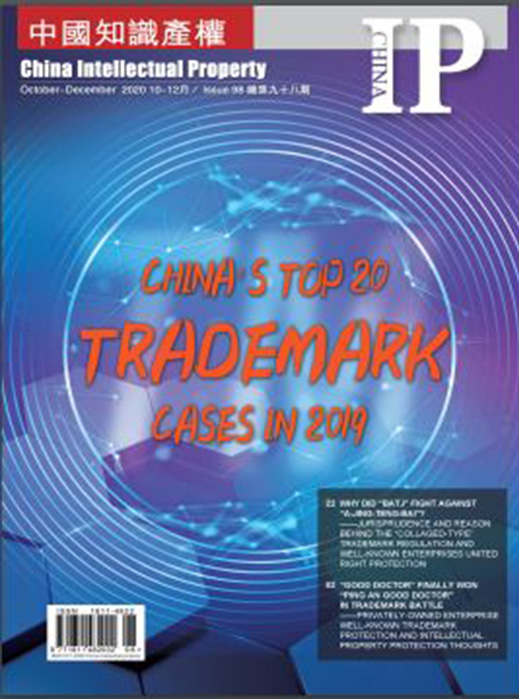First-instance case number: (2018) Sichuan 01 Preliminary Civil Judgement No. 574
The product identification code is a mark that identifies the specific information of the product. Unauthorized removal of the product identification code to hide the source of the product will damage the identification and guidance functions of the registered trademark, and belongs to other trademark infringements that infringe on the interests of the trademark owner.
Case introduction
Plaintiff: American Amway Co., Ltd. (referred to as Amway Corp), Amway (China) Co., Ltd. (referred to as Amway China)
Defendant: Zhang Congzhou Commerce and Trade Company of Chenghua District (referred to as Zhang Congzhou Commerce and Trade Company)
Amway Corp, USA is the exclusive owner of trademarks No. 4188246, No. 9443478, No. 4188254, etc., and it authorizes Amway China to use the aforementioned trademarks. Zhang Congzhou Commerce and Trade Company opened an online store named "China Shanghai Outlet Store" on the Taobao platform in the name of "Zhang Congzhou 19590910", which sells 21 kinds of "Amway Nutrilite" products. Zhang Congzhou Commerce and Trade Company declared in its online store that the products it sold were genuine and removed the tracking code set by Amway China. The American Amway Company and Amway China claimed that Zhang Congzhou Commerce and Trade Company’s removal of the code from the alleged infringing products infringed their trademark rights and constituted false promotion.
After trial, the Intermediate People’s Court of Chengdu City, Sichuan Province, held that: the 21 types of alleged infringing products sold by Zhang Congzhou Commerce and Trade Company on its Taobao online store all have damaged QR codes or barcodes, and the tracking code at the bottom of the bottles have also been destroyed, and that Zhang Congzhou Commerce and Trade Company had not submitted rebuttal evidence to prove that the aforementioned products were genuine. Also, Zhang Congzhou Commerce and Trade Company stated in its online store that "we will remove the code of the products after we receive the products from Amway." When a trademark owner uses the trademark symbol on a product and puts it on the market, the product is closely related to various elements such as the trademark. Unauthorized changes to any element of a trademark or commodity may damage the identification and guidance functions of a registered trademark. The product identification code is a mark that identifies specific information about the product, including the production batch, the place of production, the place of sale, and other information. With the complete product identification code, the relevant public can more accurately distinguish and determine the source of the product based on the trademark on it. The operator removes the product identification code, which has the subjective purpose of hiding the source of the product, objectively destroying the integrity of the product, and leading to the loss of key product information. On the one hand, this behavior affects the identification function of the trademark, which prevents consumers from verifying the authenticity of the alleged infringing product based on the product identification code, which in turn creates doubts, misidentification or confusion about the true source and sales channels of the product. On the other hand, it also hindered the trademark owner to the infringing products to trace the product quality management. Therefore, the aforementioned acts caused damage to the goodwill and other trademark rights and interests of the trademark owner. Zhang Congzhou Commerce and Trade Company’s code removal act of the alleged infringing product by Zhang Congzhou belongs to the situation that caused other damages to others’ exclusive rights to use registered trademarks as stipulated in Article 57(7) of the Trademark Law of the People’s Republic of China and constitutes trademark infringement. Zhang Congzhou Commerce and Trade Company’s misleading and false promotion on product sources and producers also constitute unfair competition.
In summary, the court ruled that: Zhang Congzhou Commerce and Trade Company immediately stopped selling products that infringed the exclusive rights of Amway Corp’s No. 4188246, No. 9443478, No. 4188254 and other registered trademarks, and immediately stopped false advertising and unfair competition in its online shop "China Shanghai Outlet Store", and compensate Amway Corp, USA and Amway China for economic losses and reasonable expenses totaling RMB 700,000. The court also dismissed other claims of Amway Corp, USA and Amway China. After the judgment of the first instance, neither party appealed, and the judgment of the case has taken effect.
Typical meaning
Distinguishing the source of goods or services is the basic function of a trademark. After the trademark owner uses the trademark sign on the product and puts it on the market, the product is closely related to the trademark and other elements. Unauthorized changes to any element of a trademark or commodity may damage the identification and guidance functions of the registered trademark. The product identification code is a mark that identifies the specific information of the product, and the relevant public can more accurately distinguish and determine the source of the product in combination with the product identification code and trademark.
The purpose of removing the product identification code is to hide the source of the product and cause the loss of key information about the product. On the one hand, it infringes the consumer’s right to know the source of the product and it’s information, and prevents consumers from checking the authenticity of the infringing products according to the product identification code, thus causing consumers to doubt, misidentify or confuse the real source of the products and sales channels. On the other hand, it has hindered the trademark owner from tracking the quality of the alleged infringing products. Therefore, the act of removing the code belongs to other trademark infringements that infringe on the interests of the trademark owners.
The judgment of this case is conducive to regulating the circulation of a large number of decoded products that are difficult to distinguish between genuine and fake in e-commerce platforms and micro-commerce channels, and provides a new channel for trademark owners to protect their rights.




